Introduction to fashion feuds
There is no denying the fact that fashion is just not full of creativity but also DRAMA, and there is also no denying of the fact that the fashion industry loves its dramatic moments. The glamourous and beautiful world of fashion often gets ugly from the inside, be it personal rivalries between designers or models or legal professional court battles, there is no dearth of fashion feuds. This blog will delve into this side of fashion and look at 8 Most Popular Fashion Feuds in History. Join us as we delve into seven of the most iconic fashion feuds in history, where legendary designers and fashion icons clashed, creating headlines and unforgettable moments.
1. Coco Chanel vs. Elsa Schiaparelli
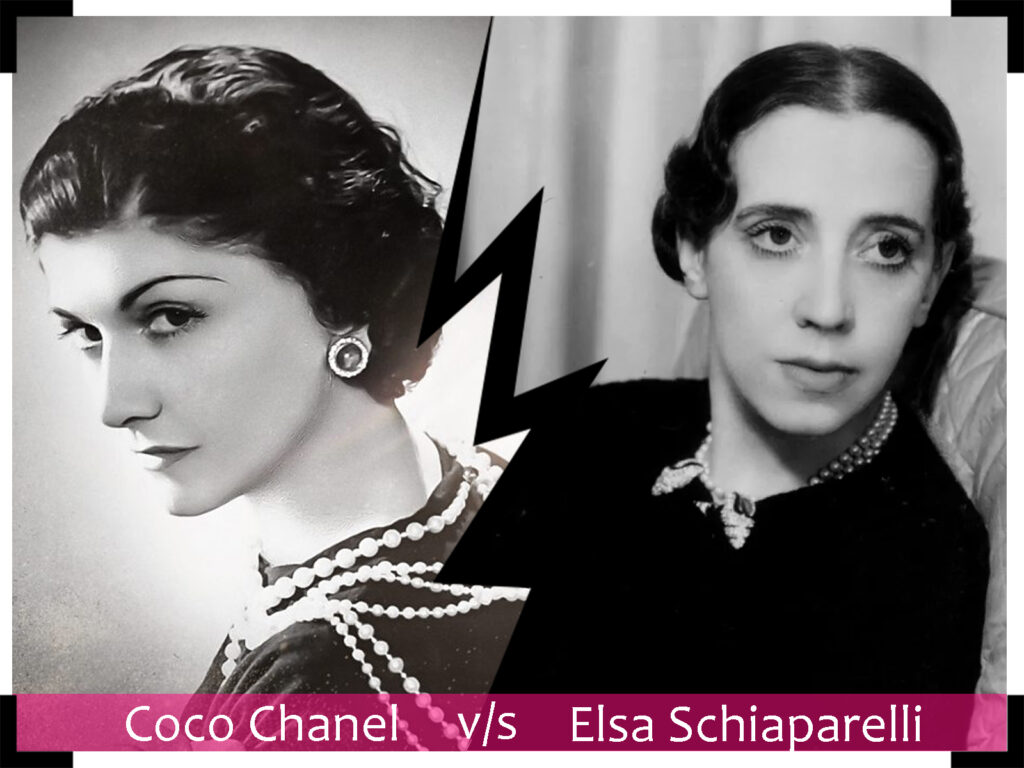
The rivalry between Coco Chanel and Elsa Schiaparelli was nothing short of legendary, dripping with scandal and animosity that electrified the fashion world of the early 20th century. These two fashion icons clashed in both style and personality, and their fashion feud became as famous as their designs.
Coco Chanel, the queen of understated elegance, was known for her sharp tongue and unfiltered opinions. She once quipped about Schiaparelli, “That Italian artist who makes clothes.” Chanel’s disdain for Schiaparelli was palpable, stemming from their vastly different approaches to fashion. Chanel favored simplicity and practicality, while Schiaparelli embraced bold, surrealist designs that often flirted with the absurd.
Elsa Schiaparelli, never one to back down, responded in kind. She referred to Chanel as “that milliner,” a snide remark about Chanel’s beginnings as a hat maker. Schiaparelli viewed Chanel’s designs as boring and unadventurous, famously saying, “Women should dare to be different.”
Their rivalry wasn’t just limited to words. One of the most scandalous incidents occurred at a costume ball thrown by the socialite and art patron, Lady Mendl (Elsie de Wolfe). Chanel, with her characteristic cunning, played a cruel prank on Schiaparelli. Chanel intentionally placed herself near a lit candelabra, knowing full well that Schiaparelli’s extravagant, art-inspired gown, designed by Salvador Dalí, was highly flammable. As Schiaparelli passed by, her dress caught fire, and she had to quickly extinguish it, leaving her humiliated in front of the elite guests. This incident cemented their bitter enmity in the annals of fashion history.
Another notable clash happened in the world of fragrance. Chanel’s No. 5 was already a resounding success, symbolizing her brand’s ethos of understated luxury. In a bold move, Schiaparelli launched her own fragrance, “Shocking,” encased in a bottle designed to resemble the curves of actress Mae West. The audacious choice and the provocative name were a direct challenge to Chanel’s refined elegance. Schiaparelli declared, “A dress cannot just hang like a picture, it should move like a symphony.” The rivalry between their fragrances mirrored the larger battle between their fashion houses.
Their mutual contempt was not just professional but deeply personal. Chanel’s disdain for Schiaparelli’s extravagant designs was rooted in her belief that they were impractical and frivolous. Schiaparelli, on the other hand, saw Chanel’s minimalist style as a lack of creativity and vision. This ideological divide fueled their public and private battles, making headlines and captivating the fashion world.
In the end, the rivalry between Coco Chanel and Elsa Schiaparelli wasn’t just about fashion; it was about two powerful women with clashing visions and personalities. Their fashion feud, filled with biting remarks and scandalous incidents, added an element of drama that continues to fascinate fashion historians and enthusiasts alike. Their legacies, shaped by their antagonism, still influence and inspire designers today, proving that sometimes, the most intense rivalries create the most unforgettable legends.
2. Coco Chanel vs. Christian Dior
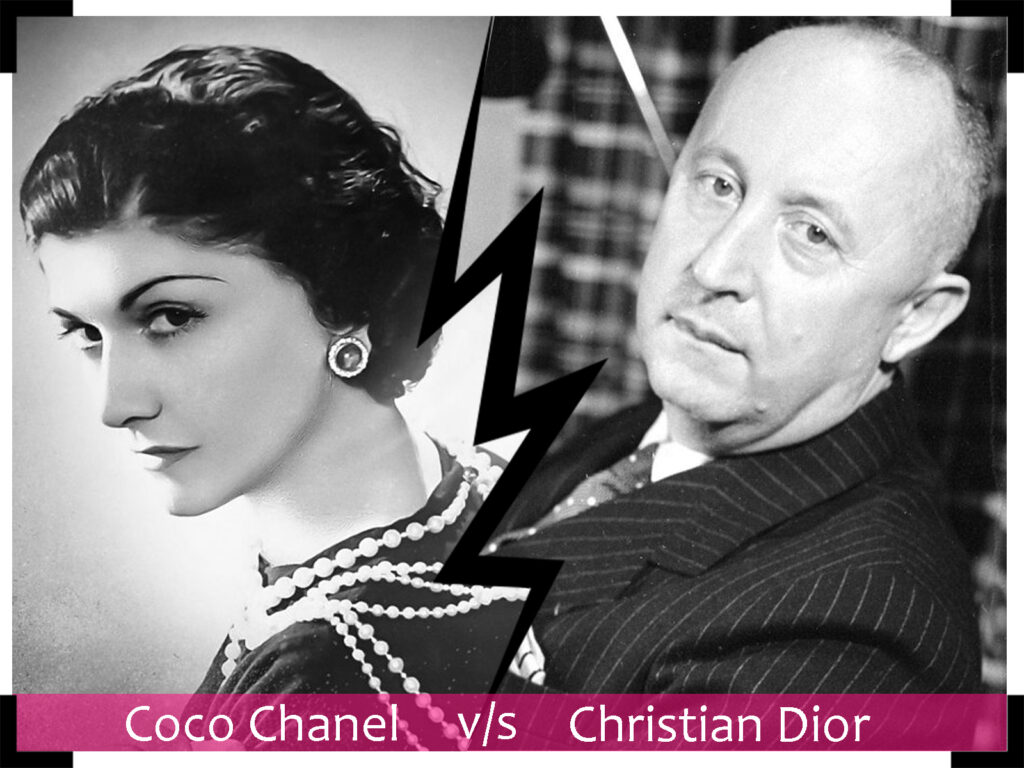
The fashion world was no stranger to fierce rivalries, but the one between Coco Chanel and Christian Dior was particularly sensational. Their clashes, both in design philosophy and personal animosity, created a whirlwind of drama that captivated the industry.
Coco Chanel, a stalwart of simplicity and elegance, was already a towering figure in fashion when Christian Dior launched his career. Dior, with his “New Look,” introduced a style that was the antithesis of Chanel’s minimalist approach. His voluminous skirts, nipped waists, and extravagant use of fabric represented a return to opulence that Chanel had long abandoned. She famously derided Dior’s designs, saying, “Dior doesn’t dress women, he upholsters them.”
Dior, while more reserved in his public comments, was well aware of Chanel’s barbs. He once remarked, “Chanel is quite simply a genius. But a genius of a past era.” This thinly veiled jab highlighted his belief that his own designs represented the future of fashion, while Chanel’s were relics of the past.
Their fashion feud hit a peak in the late 1940s and early 1950s. Chanel, having made a grand return to the fashion scene after a wartime hiatus, was determined to reclaim her throne. She saw Dior’s designs as an affront to the liberation of women’s fashion that she had championed. Chanel despised the restrictive nature of Dior’s silhouettes, viewing them as a step backward for women’s freedom. She bluntly stated, “We were witness to a return of the corset.”
The infamous “Battle of Versailles” fashion show in 1973, although occurring after Dior’s death, was a symbolic clash of their legacies. This event pitted American designers against French couturiers, and Chanel’s house stood as a representation of the classic, timeless elegance she championed, while Dior’s represented the luxurious, elaborate style he popularized. Though both houses performed well, the underlying tension between their contrasting aesthetics was palpable.
One scandalous anecdote involves a dinner party where both Chanel and Dior were present. Chanel, ever the provocateur, reportedly made a cutting remark about the excessive fabric in Dior’s dresses. She quipped, “I could make three dresses out of the material in one of his.” Dior, known for his gentlemanly demeanor, responded with a sly smile and simply said, “Madame, then you would have three very plain dresses.” This exchange, while seemingly polite, was loaded with the sharp edges of their rivalry.
Their clash wasn’t merely professional but deeply philosophical. Chanel’s designs were born from a desire to free women from the constraints of their clothing, to offer them ease and movement. Dior’s “New Look” was about a return to femininity, glamour, and luxury, celebrating an idealized vision of womanhood. This fundamental difference in their approach to women’s fashion fueled their enmity.
In the end, the fashion feud between Coco Chanel and Christian Dior was more than just a clash of couture. It was a battle between two titanic figures whose visions for fashion were diametrically opposed. Their legacy is a testament to the dynamic and ever-evolving nature of the fashion world, where clashes of creativity and philosophy can ignite unforgettable rivalries and inspire generations to come.
3. Coco Chanel vs. Christobal Balenciaga
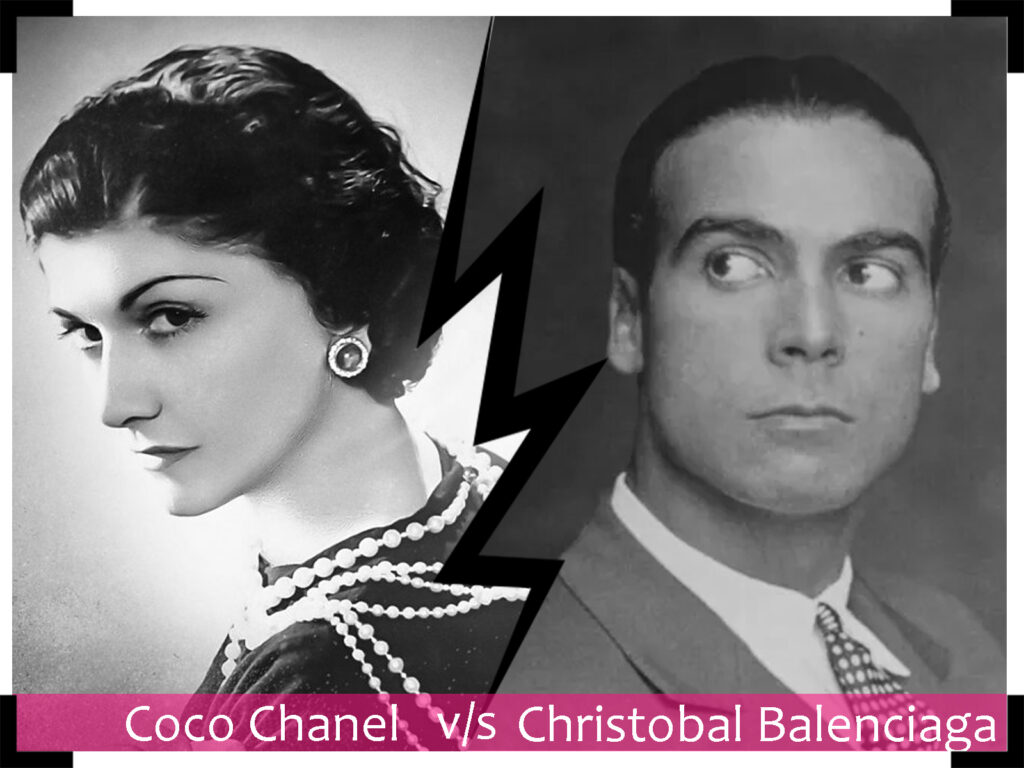
The fashion feud between Coco Chanel and Cristóbal Balenciaga was a tempestuous clash of titans, each representing distinct philosophies in fashion. Chanel, with her sharp wit and revolutionary simplicity, found herself pitted against Balenciaga’s masterful craftsmanship and architectural precision. Their disdain for each other was palpable, and the fashion world reveled in their contentious relationship.
Coco Chanel, ever the provocateur, often dismissed Balenciaga’s designs as overly elaborate. She once sneered, “Balenciaga is a couturier in the truest sense of the word. Only a couturier could make such ugly dresses.” Chanel’s minimalist approach to fashion, which focused on liberating women from the constraints of their clothing, stood in stark contrast to Balenciaga’s sculptural and often ornate creations.
Balenciaga, known for his reserved and dignified demeanor, was not one to engage in public feuds. However, his disdain for Chanel’s designs was evident. He reportedly remarked, “Chanel’s dresses are not dresses, they are rags.” Balenciaga’s emphasis on structure, precision, and luxury clashed with Chanel’s penchant for simplicity and practicality.
One infamous incident that highlighted their rivalry occurred during a fashion show in Paris. Chanel, in her typical audacious fashion, made a point to sit in the front row at Balenciaga’s show, a rare move for her. Throughout the show, she was seen whispering and giggling with her companions, clearly unimpressed by Balenciaga’s creations. This brazen display of disrespect did not go unnoticed, and the tension between the two houses escalated.
Their rivalry was also marked by their differing approaches to the business of fashion. Chanel, with her keen sense for marketing and branding, transformed her name into a global empire. She famously declared, “I don’t do fashion, I am fashion.” Balenciaga, on the other hand, was a purist, dedicated to the art of couture. He eschewed the limelight, focusing instead on perfecting his craft. His reclusive nature led Chanel to quip, “Balenciaga may be a genius, but he’s a recluse hiding behind his dresses.”
Another scandalous episode involved Chanel allegedly spreading rumors about Balenciaga’s business practices. She insinuated that he was using subpar materials to cut costs, a claim that Balenciaga vehemently denied. This accusation sparked a fierce backlash from Balenciaga’s supporters and further deepened the rift between the two designers.
Their rivalry also extended to their influence on younger designers. Chanel’s protégés were known to openly criticize Balenciaga’s work, echoing her sentiments. Balenciaga’s followers, in turn, dismissed Chanel’s designs as outdated and uninspired. This feud between their respective camps only fueled the fire, creating a polarized fashion scene.
Ultimately, the fashion feud between Coco Chanel and Cristóbal Balenciaga was a battle of egos, aesthetics, and ideologies. Chanel’s bold, rebellious spirit clashed with Balenciaga’s meticulous, disciplined approach, creating a dynamic tension that electrified the fashion world. Their legacies, though shaped by their mutual animosity, continue to influence and inspire designers, proving that even the most scandalous rivalries can leave an indelible mark on history.
4. Yves Saint Laurent vs. Karl Lagerfeld
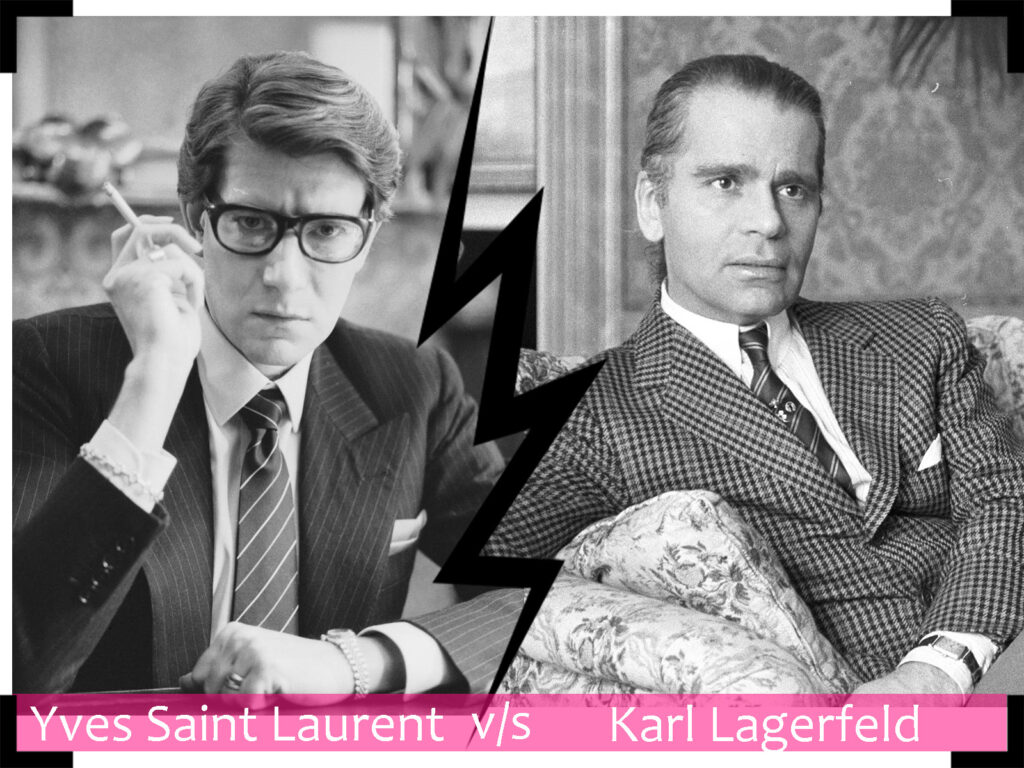
The not so simple fashion feud between Yves Saint Laurent and Karl Lagerfeld was a dramatic and scandalous saga that defined the haute couture scene in the latter half of the 20th century. Their competitive spirit and personal animosities were legendary, with each designer vying for dominance in the world of fashion.
Yves Saint Laurent, a prodigy who had already gained fame as the head designer at Dior before launching his own label, was known for his innovative and daring designs. Karl Lagerfeld, equally talented and flamboyant, rose to prominence at the helm of multiple fashion houses, including Fendi and Chanel. Their paths crossed early in their careers, and their rivalry quickly became one of fashion’s most talked-about feuds.
In the 1950s, Saint Laurent and Lagerfeld were both young designers working in Paris, and they initially shared a camaraderie. However, as their careers progressed, competition intensified. A pivotal moment in their rivalry occurred when they both entered a design competition held by the International Wool Secretariat. Saint Laurent won first prize, which was a significant boost to his career. Lagerfeld, who won in the coat category, was left feeling overshadowed. Saint Laurent later remarked, “Karl was always jealous. He never forgave me for winning that competition.”
Their rivalry deepened in the 1970s when Lagerfeld became the creative director of Chanel. Saint Laurent had already established his own successful fashion house by then, but Lagerfeld’s appointment at Chanel was a direct challenge to his dominance. Lagerfeld’s revitalization of Chanel, with his bold and modern interpretations, threatened to eclipse Saint Laurent’s influence. Lagerfeld once snidely commented, “Saint Laurent has a style. Chanel has a soul.”
The personal animosity between the two designers was further fueled by their mutual connections. Both were close friends with Jacques de Bascher, a charismatic socialite known for his wild lifestyle. De Bascher’s involvement with both men added a layer of personal drama to their professional rivalry. Saint Laurent’s partner, Pierre Bergé, accused Lagerfeld of leading Saint Laurent astray, saying, “Karl has always been Yves’ shadow, but a dark one.”
One of the most scandalous incidents in their rivalry occurred at a Parisian nightclub in the 1970s. Lagerfeld and Saint Laurent were both present at a high-profile party. Fueled by jealousy and alcohol, Saint Laurent publicly confronted Lagerfeld, accusing him of stealing his ideas. The confrontation nearly came to blows, with witnesses recalling the dramatic scene as a pinnacle of their enmity.
Their rivalry extended beyond the personal and professional into the realm of public image. Saint Laurent was seen as the tortured artist, plagued by personal demons and a volatile temperament. Lagerfeld, with his trademark sunglasses, high collars, and fan, cultivated an image of aloof, almost regal, detachment. He often criticized Saint Laurent’s lifestyle, once saying, “Yves was a genius, but he let his demons devour him.”
Despite their mutual disdain, both designers profoundly respected each other’s talent. Saint Laurent once grudgingly admitted, “Karl has an extraordinary talent for self-promotion, which I lack.” Lagerfeld, in turn, acknowledged, “Yves changed the course of fashion. Even I cannot deny his influence.”
In the end, the fashion feud between Yves Saint Laurent and Karl Lagerfeld was as much a clash of personalities as it was of fashion philosophies. Their contrasting styles, personal vendettas, and public spats created a compelling narrative that continues to fascinate the fashion world. Their legacies, marked by both brilliance and bitterness, remain intertwined in the annals of fashion history, a testament to the fiery passion that drove them both to greatness.
5. Gianni Versace vs. Giorgio Armani
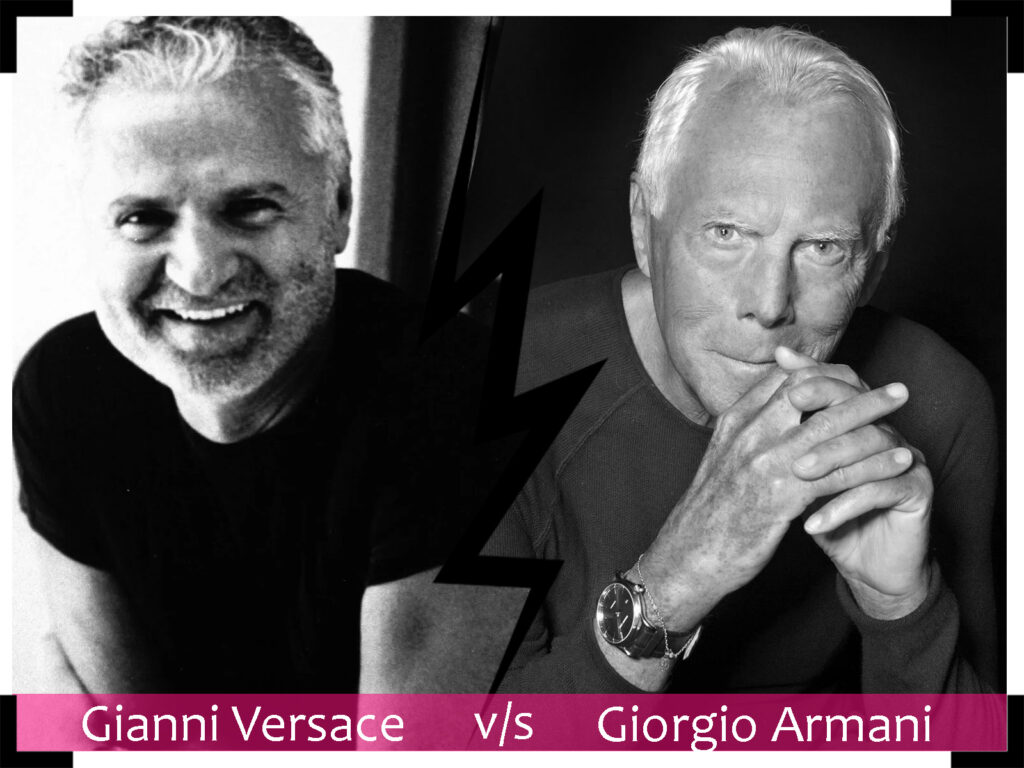
The fashion feud between Gianni Versace and Giorgio Armani was a high-stakes battle of style, personality, and ego that set the fashion world ablaze. Both designers were powerhouses of Italian fashion, yet their visions were as different as night and day, fueling a feud that was as intense as it was captivating.
Gianni Versace, with his opulent, bold, and flamboyant designs, was the epitome of fashion excess. He adored glamour and celebrity, creating looks that were unapologetically daring. Giorgio Armani, in contrast, championed minimalist elegance. His clean lines, muted colors, and understated luxury were the hallmarks of a style that exuded quiet sophistication.
Their rivalry was rooted in their differing design philosophies, but it quickly became personal. Versace once remarked about Armani, “He makes clothes for the wives, and I dress the mistresses.” This biting comment highlighted Versace’s belief that Armani’s designs were too conservative and lacked excitement.
Armani, known for his more reserved demeanor, didn’t hold back when it came to Versace. He famously quipped, “Versace is the king of vulgarity.” Armani’s disdain for Versace’s ostentatious style was palpable, and he often criticized the overt sexuality and flashiness of Versace’s designs.
A particularly scandalous incident that highlighted their rivalry occurred at the 1990 Milan Fashion Week. Versace staged an extravagant show featuring supermodels like Naomi Campbell, Cindy Crawford, and Linda Evangelista, who strutted down the runway in glittering, skin-baring outfits. The spectacle was the talk of the town. In a thinly veiled jab, Armani later remarked, “I design for real women, not for showgirls.” This comment stung Versace, who prided himself on his close relationships with some of the world’s top models.
Their public spat escalated in the press. In an interview, Versace mocked Armani’s style, saying, “He tries to make a statement by doing nothing.” Armani retaliated by dismissing Versace’s approach as shallow, stating, “Fashion should be intelligent and dignified, not a gaudy display of wealth.”
Behind the scenes, their rivalry was just as fierce. Both designers vied for the favor of Italy’s elite, and their shows often became battlegrounds for attracting the most influential clients and celebrities. The fashion press eagerly fanned the flames, with headlines that highlighted the latest jabs and counter-jabs between the two houses.
One of the most memorable moments in their rivalry was the 1995 Vanity Fair cover story, which dubbed the duo “The Titans of Milan.” The article detailed their cutthroat competition and included a quote from Versace, who declared, “Armani is a businessman, I’m an artist.” This statement underscored Versace’s view of himself as a creative visionary, in contrast to Armani’s more commercial approach.
Despite the bitterness, there was an undercurrent of respect. Armani once acknowledged Versace’s influence by saying, “Gianni has an extraordinary talent for drama.” Versace, too, in a rare moment of concession, admitted, “Giorgio’s precision and elegance are undeniable, even if they bore me to tears.”
The shocking murder of Gianni Versace in 1997 brought a sudden and tragic end to their rivalry. Armani, displaying a sense of magnanimity, paid tribute to his fallen rival, saying, “Versace brought color and fantasy to fashion. His loss is deeply felt.”
The Versace-Armani fashion feud was more than just a clash of styles; it was a battle of ideologies, personalities, and legacies. Their fierce competition pushed each to greater heights, driving innovation and creativity that left an indelible mark on the fashion world. Even today, the echoes of their rivalry continue to influence and inspire designers, reminding us that the most legendary feuds are often the ones that shape history.
6. Azzedine Alaïa vs. Anna Wintour
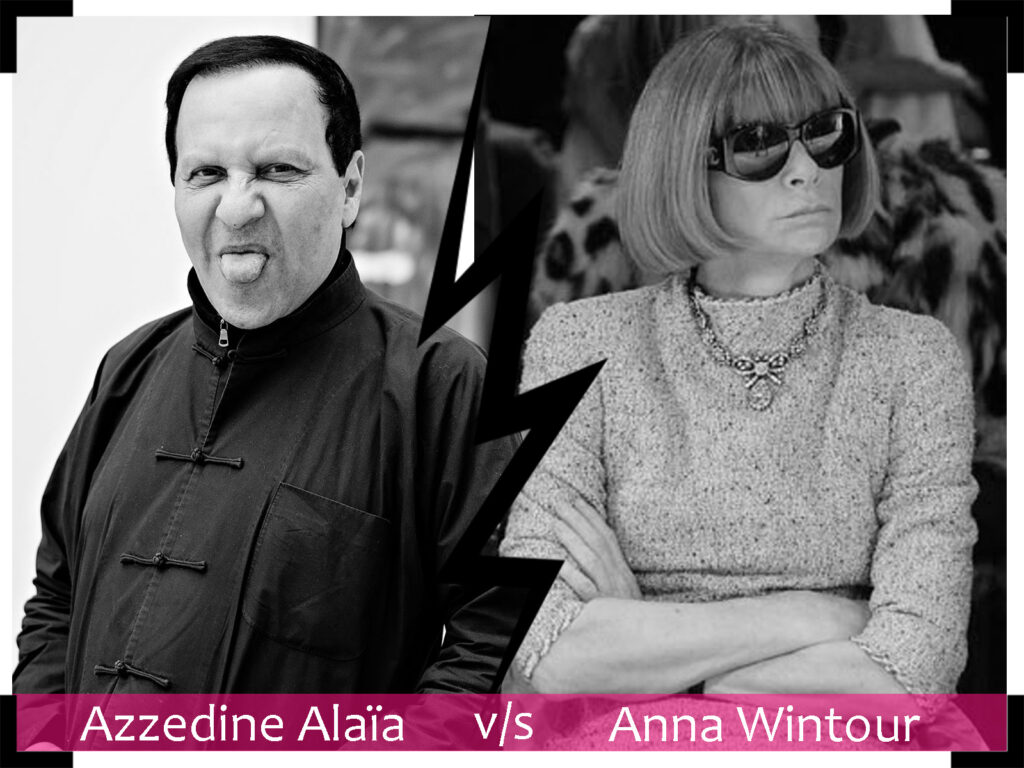
The fashion feud between Azzedine Alaïa and Anna Wintour was one of the most captivating and scandalous feuds in the fashion industry. Azzedine Alaïa, the “King of Cling,” known for his masterful tailoring and body-hugging designs, was a true craftsman who shunned the limelight. Anna Wintour, the powerful and often feared editor-in-chief of Vogue, was the ultimate fashion gatekeeper with the power to make or break designers.
Their mutual disdain was evident and often played out publicly, creating a soap opera-worthy narrative in the fashion world. Alaïa was never one to mince words when it came to Wintour. He once bluntly declared, “She runs the business very well, but not the fashion part. When I see how she is dressed, I don’t believe in her taste one second.” This cutting remark was just the tip of the iceberg in their long-standing feud.
Wintour, known for her icy demeanor and sharp instincts, rarely commented publicly on Alaïa. However, her actions spoke volumes. Despite Alaïa’s critical acclaim and loyal celebrity following, he was notably absent from the pages of American Vogue for many years. This exclusion was widely interpreted as a power move by Wintour, a way to exert control over a designer who dared to defy her influence.
A particularly scandalous incident occurred in 2009 when Alaïa was conspicuously absent from the Metropolitan Museum of Art’s Costume Institute Gala, an event that Wintour curates and oversees. Alaïa had provided dresses for models Stephanie Seymour and Naomi Campbell, but when his designs were not featured in the accompanying exhibition, he made a dramatic statement by withdrawing his participation entirely. This snub was seen as a direct challenge to Wintour’s authority and was a bold move that sent shockwaves through the fashion community.
Alaïa’s disdain for the fashion establishment that Wintour represented was no secret. He famously criticized the industry’s obsession with thinness, saying, “In the fashion industry, you can see the normal body types of women in photos, but in the real fashion world, you will never see that.” This comment was widely interpreted as a jab at Vogue and its perpetuation of unrealistic body standards.
Wintour’s control over the fashion narrative was almost absolute, but Alaïa remained one of the few who publicly resisted her. He once quipped, “I am a true couturier. For me, the work is not just a question of money.” This statement was a clear dig at the commercial nature of the fashion industry that Wintour embodied.
Their fashion feud wasn’t just about professional disagreements; it was deeply personal. Alaïa’s refusal to conform to the industry’s expectations and Wintour’s iron grip on the fashion narrative created an ongoing clash. Wintour’s decision not to feature Alaïa’s work in Vogue was seen by many as a vendetta, a way to marginalize a designer who refused to play by her rules.
Despite their rivalry, there was a begrudging respect between them. After Alaïa’s passing in 2017, Wintour paid tribute to him, acknowledging his unparalleled craftsmanship. She stated, “Azzedine Alaïa was a true visionary, a great man, and an amazing talent who will always be remembered for his skill and his designs.” This tribute, while respectful, couldn’t erase years of tension and rivalry.
The fashion feud between Azzedine Alaïa and Anna Wintour remains one of the most compelling narratives in fashion history. It was a clash of ideologies: Alaïa’s dedication to craftsmanship and individuality versus Wintour’s commercial acumen and influence. Their rivalry not only highlighted the power struggles within the fashion industry but also underscored the tensions between creativity and commerce, making it a saga that continues to fascinate and intrigue.
7. Tyra Banks vs. Naomi Campbell
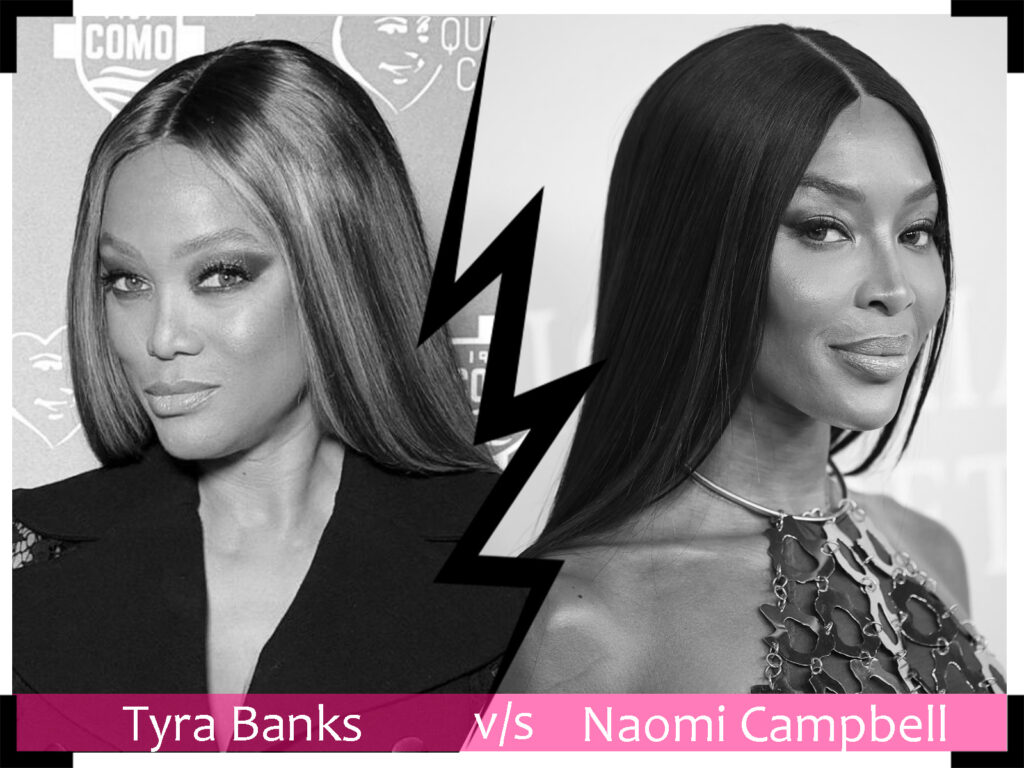
The fashion feud between Tyra Banks and Naomi Campbell is one of the most sensational and enduring feuds in the fashion world. Both supermodels dominated the runway in the 1990s, but their relationship was marked by jealousy, competition, and public confrontations that fueled endless tabloid headlines.
Tyra Banks, who burst onto the scene as a fresh-faced teenager, was often pitted against Naomi Campbell, the reigning queen of the runway. From the beginning, Banks looked up to Campbell and hoped to follow in her footsteps. However, she quickly discovered that the fashion industry was more cutthroat than she had imagined. Banks once recounted, “I was told Naomi’s upset that you’re here. And when I finally met her, I was like, ‘Oh my God, this is so cool.’ And I was quickly put in my place.”
Naomi Campbell, known for her fierce walk and even fiercer temper, saw Banks as a threat to her dominance. Campbell’s disdain for Banks was palpable, and she didn’t hide it. Reports of backstage tension and icy encounters became the stuff of fashion folklore. In an interview, Banks said, “People didn’t know how much pain I was going through, being ostracized from the industry, not being able to eat with other models at shows, things that are very catty but very painful.”
One of the most scandalous incidents in their rivalry occurred during a fashion show in the early 1990s. Banks claimed that Campbell had her thrown out of a photoshoot. “She did a lot of really nasty things,” Banks said. “It was really hurtful, like some of the lowest times of my life dealing with that.”
The media further fueled their rivalry, often comparing the two models and speculating on their animosity. Campbell was notoriously tight-lipped about the feud for many years, but she eventually addressed it, stating, “I’m very proud of Tyra and what she’s done with America’s Next Top Model. I’m proud to know her.”
Banks, on her part, used her platform to discuss the rivalry openly. On her talk show, “The Tyra Banks Show,” she invited Campbell to clear the air. The episode was highly anticipated, and viewers tuned in to witness the two supermodels confront their past. During the emotional exchange, Banks revealed, “I just want to understand what happened, because you hurt me so bad.”
Campbell, known for her bluntness, apologized, but her apology seemed somewhat guarded. She said, “I’m sorry for anything that I’ve ever done to you to hurt you. I was young, we were all young. But I’m sorry.”
Despite the public apologies, the tension between the two never fully dissipated. Their rivalry was reignited in 2013 when Campbell launched her reality show, “The Face,” which many saw as a direct challenge to Banks’ “America’s Next Top Model.” Banks took the high road publicly, congratulating Campbell on her show, but insiders speculated that she viewed it as an encroachment on her territory.
The fashion feud between Tyra Banks and Naomi Campbell is a stark reminder of the competitive nature of the fashion industry, particularly for women of color who had to fight for their place in a predominantly white industry. Banks once said, “Naomi and I were competitors, yes, but I also felt that we were treated as if there could only be one of us.”
In recent years, both supermodels have made strides to move past their fashion feud. However, the legacy of their feud remains one of the most talked-about stories in fashion. Their dramatic encounters, public confrontations, and candid confessions have cemented their rivalry in fashion history, reminding us that behind the glamour of the runway, the stakes are incredibly high, and the battles can be brutal.
8. The Legal Battle of Louis Vuitton vs. Hermès
The legal battle between Louis Vuitton and Hermès was one of the most high-profile and scandalous corporate fashion feud in the luxury fashion industry. It wasn’t just a clash of titans; it was a saga of intrigue, espionage, and high-stakes maneuvers that captivated the world.
Louis Vuitton, under the umbrella of LVMH (Moët Hennessy Louis Vuitton), the largest luxury conglomerate in the world, was led by the shrewd and ambitious Bernard Arnault. Hermès, a family-owned business renowned for its exquisite craftsmanship and exclusivity, was fiercely protective of its independence. The seeds of their conflict were sown when LVMH began quietly amassing shares in Hermès, leading to a full-blown legal confrontation that rocked the luxury fashion world.
Arnault, often referred to as “the wolf in cashmere,” made no secret of his admiration for Hermès. However, his methods of acquiring a stake in Hermès were anything but transparent. By 2010, LVMH had secretly acquired a significant portion of Hermès shares through subsidiaries and derivatives, amounting to a 17.1% stake. Hermès, blindsided by this stealthy takeover, accused LVMH of insider trading and market manipulation.
Patrick Thomas, then CEO of Hermès, was outraged and famously declared, “If you want to seduce a beautiful woman, you don’t start by raping her from behind.” This provocative statement underscored the animosity between the two companies and the perceived underhandedness of LVMH’s tactics. Thomas went on to call the move “the most important challenge that Hermès has faced in its entire history.”
Arnault, in his typical composed manner, defended his actions, stating, “Our intention is to be a long-term shareholder in Hermès and to support the company’s successful strategy.” However, his words did little to quell the fury of the Hermès family, who saw this as a hostile takeover.
The scandal reached new heights when Hermès took legal action against LVMH, alleging that the acquisition of shares was done in a manner that violated French stock market regulations. The French financial markets authority (AMF) launched an investigation into LVMH’s purchase tactics, adding another layer of drama to the unfolding saga.
In 2013, the AMF fined LVMH a staggering €8 million for failing to disclose the gradual acquisition of shares, which was seen as a violation of transparency obligations. Hermès celebrated this as a victory, but the battle was far from over. The Hermès family also created a holding company to safeguard their shares and prevent any further attempts by LVMH to increase its stake.
Behind the scenes, the tension was palpable. Pierre-Alexis Dumas, artistic director of Hermès, remarked, “Hermès is not just a brand. It’s a family and a heritage that we protect fiercely.” This sentiment echoed throughout the Hermès camp, where preserving the brand’s independence and legacy was paramount.
Meanwhile, the luxury fashion world watched with bated breath as these two giants clashed. The fashion feud wasn’t just about business; it was a battle of philosophies. Hermès represented artisanal craftsmanship, heritage, and exclusivity, while Louis Vuitton embodied aggressive expansion, marketing prowess, and luxury on a grand scale.
In 2014, a surprising turn of events brought a truce of sorts. LVMH announced that it would distribute its shares in Hermès to its shareholders, effectively ending its contentious stake in the company. This move was seen as a strategic retreat by Arnault, who stated, “We are happy to have contributed to the success of Hermès.”
The legal fashion feud battle between Louis Vuitton and Hermès remains one of the most riveting episodes in the history of luxury fashion. It was a clash of egos, a fight for control, and a testament to the lengths companies will go to protect their brand identities. The scandalous details, from secret share acquisitions to biting public statements, have cemented this feud in fashion lore, proving that in the world of luxury, power struggles are as intricate and compelling as the designs themselves.
Conclusion
In the glamorous yet cutthroat world of fashion, rivalries and fashion feud are as much a part of the narrative as the clothes themselves. From the iconic clash between Coco Chanel and Cristóbal Balenciaga to the fiery encounters between Tyra Banks and Naomi Campbell, these conflicts have shaped the industry, driving innovation and capturing the public’s imagination. The legal tussle between Louis Vuitton and Hermès added a corporate dimension to these dramatic tales, highlighting the high stakes and fierce protectiveness surrounding luxury brands.
Each rivalry, whether fueled by personal animosities, professional competition, or corporate ambitions, reveals a deeper truth about the fashion world: it is a realm where creativity and ego collide, where the desire for dominance often leads to legendary confrontations. Coco Chanel’s minimalist rebellion clashed with Balenciaga’s structured elegance, Tyra Banks and Naomi Campbell’s personal battles mirrored the struggles of diversity and representation, and the covert machinations of LVMH against Hermès underscored the ruthless nature of business in luxury fashion.
These fashion feuds are more than just sensational stories; they are a testament to the passion and intensity that drive the fashion industry. They highlight the delicate balance between art and commerce, the personal and the professional, and the old guard versus the new. In a world where image is everything, these rivalries have left an indelible mark, shaping not only the careers of those involved but also the trajectory of fashion itself.
As we reflect on these iconic fashion feud, we see that behind every beautiful garment and dazzling runway show lies a complex web of relationships, power struggles, and battles for supremacy. These stories remind us that fashion is not just about clothes; it’s about vision, ambition, and the relentless pursuit of greatness. Whether viewed as scandals or as catalysts for change, these rivalries have undeniably contributed to the rich tapestry of fashion history, making the industry as dynamic and captivating as the creations it produces.
Let us know what you think and did we miss any major fashion feud !





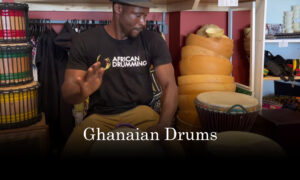





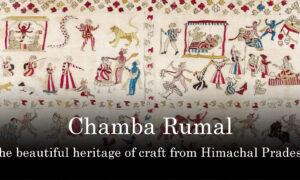

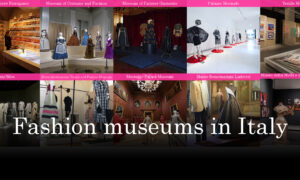















Pingback: J W Anderson Tale Of Successful Fashion Wunderkind In 5 Mins
Pingback: 9 Best Fashion Museums In Japan
Pingback: 6 Emilio Pucci : Best Italian Fashion Designer Series